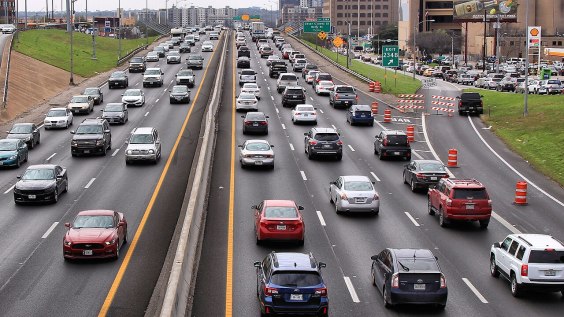
There are a number of highly qualified people on the list of candidates to be the next mayor of San Francisco, and the Board of Supervisors could embark on a nomination process beginning today. What has become abundantly clear to me is that the person replacing Mayor Gavin Newsom should not be a caretaker, but someone who will lead on an issue that touches the lives of every one of our 815,000 residents: transportation.
We are in the thick of a mammoth city budget crisis, and our public transportation system, Muni, is over capacity and limping. We can't wait until after the election next November for leadership.
People who walk and bike around this great city in increasing numbers are getting hurt every day by drivers congesting our streets, on top of the colossal toll traffic takes on our health and our environment. The "cars first, people second" mentality remains pervasive in city government.
The interim mayor needs to come in and get right to work on strengthening the leadership structure of the SFMTA, which manages Muni and our streets, and work on empowering those progressive transportation planners within the agency who have been stifled by a culture of fear. The talented city planners who really want to transform our streets are sometimes afraid to do anything bold because they fear management doesn't have their backs. A mayor who really believes in the city's Transit First policy should pick advocates and transportation professionals who have strong convictions about livable streets as department heads and managers instead of old-school traffic engineers resistant to change.
We need an interim mayor who can unambiguously and steadfastly show leadership on sustainable transportation -- someone who won't cave in to a few complaints about removing parking spaces to re-balance the streets for people who bike, walk or take transit. Supervisors should appoint a mayor who won't buckle on extending parking meter hours to evenings and Sundays, or at the very least allow the pilots to move forward (they were killed by Mayor Newsom) in those commercial districts where they're sorely needed and SFPark is already in place. It will boost business and make it easier to park.
For too long now, drivers in San Francisco have actually been getting a break over transit riders despite the constant drumbeat in the Chronicle and the Examiner that they are "getting hit with fees." Many of the progressive members of the Board of Supervisors understand this. A progressive mayor should consider the inequitable price transit riders are paying through higher fares and deteriorating service. To bring back some balance and provide drivers with fewer reasons to keep our neighborhoods clogged with traffic, the new mayor should consider, as one example, getting rid of all discounted parking in the city's parking garages. That will raise much-needed revenue for Muni.
The person who takes over Room 200 will need to make Muni a top priority and be creative about finding new sources of revenue. Prop G will help save Muni some money but it's not a panacea. We need to consider new ballot measures to fix and fund Muni. The mayor will have to be especially diligent because the state is still in crisis, and legislators in Sacramento will likely come back to the transit-raiding trough they have rooted their snouts in the past few years. Although there is some hope that Governor-elect Jerry Brown will give sustainable transportation a boost and figure out some way to steadily fund transit, Proposition 26 further complicates the process of raising money across the state and casts a pall upon the downward slide at transit agencies everywhere.
Over the past four years, the SFMTA has had the legitimate and, let's face it, convenient excuse that the Bike Plan injunction was preventing the build out of bicycle improvements. Now that the city has put the injunction to bed, so too must they start planning for the next bold bicycle vision while their paint crews implement the old plan. It's going to cost $100 million to build up a network of fully separated, connected, dignified bikeways in the city. The San Francisco Bicycle Coalition's Connecting the City project is a bold plan to transform San Francisco into a world-class bicycling city and move us into the era of bikeways that can accommodate riders whether they're eight years old or 80. The need is urgent. More and more people are using bicycles as everyday transportation in San Francisco and many more say they would if it was safer.
SFMTA Chief Nat Ford has been mostly focused on Muni, for good reason, but he's been extremely weak on pedestrian safety. The recent release of a pedestrian safety study lacking a concrete action plan for improving conditions is just one example of this failing. It probably wouldn't surprise you to learn the SFMTA does not have a dedicated budget for pedestrian improvements in the city. Yes, a great deal of projects the SFMTA has undertaken affect pedestrians, but the agency does not have a fund targeted specifically for improving the pedestrian realm, nor will the re-organization of the Sustainable Streets Division make that gray area clearer. This demonstrates that pedestrian safety has not really been a priority for the SFMTA, and unless something dramatic changes, it will continue to languish while people are killed and maimed in crosswalks.
Ford is a smart transportation professional. He knows that anyone who acts as a caretaker cannot move an agency forward, something he himself acknowledged in a letter to SFMTA staff last year.
"We cannot simply be caretakers," Ford wrote in September 2009. "We must advance the agency into one that supports a world-class, fully integrated, multi-modal transportation system that is economically, environmentally and socially sustainable."
But anyone who has been following the SFMTA closely knows that all of this has been a difficult challenge, and it points back to Ford and the Mayor's Office.
You'll hear a litany of excuses for why the SFMTA can't seem to catch up to its counterparts in New York City or Portland. Lack of funds. Lack of resources. Managing the daily crises. But ultimately it falls on the shoulders of the person occupying Room 200. Whoever the new mayor is will have a great opportunity to embolden all the talented folks in our city agencies who are eager to move ahead with transforming our streets. That person will also have an opportunity to appoint up to three new members of the SFMTA Board, and pick advocates with strong backgrounds in sustainable transportation. The current board does not call the shots.
If San Francisco is serious about being a leader in sustainable transportation, then our Board of Supervisors should appoint a mayor who is prepared to lead.
We can't wait.




